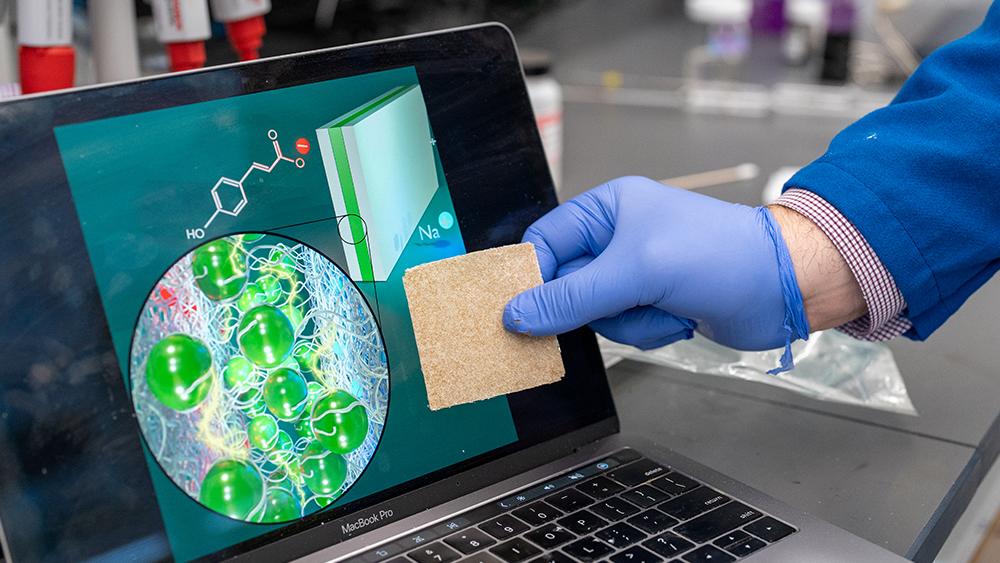Researchers use water treatment method to capture acids from agricultural waste | Penn State UniversityA gloved hand holds a porous ion resin wa...
Published on by Water Network Research, Official research team of The Water Network

A gloved hand holds a porous ion resin wafer, which resembles a sponge, against a computer screen showing a colorful scientific journal cover.
A Penn State-led research team has invented a new class of ion-exchange membrane wafer assemblies that significantly improves electrodeionizaton’s ability to capture p-coumaric acid from liquid mixtures. Researchers improved upon the resin wafers (shown at right), allowing them to improve the process. The paper was selected as ACS Sustainable Chemical Engineering's January 23 journal cover, shown on the computer screen at left. Credit: Jeff Xu/Penn State. All Rights Reserved.
UNIVERSITY PARK, Pa. — Bound for the landfill, agricultural waste contains carbon sources that can be used to produce high-value compounds, such as p-coumaric acid, which is used in manufacturing pharmaceuticals. Electrodeionization, a separation method that uses ion-exchange membranes, is one way to capture the acids and other useful components. However, to capture large quantities at scale, improvements to the method must be made.
A Penn State-led research team has invented a new class of ion-exchange membrane wafer assemblies that significantly improves electrodeionizaton’s ability to capture p-coumaric acid from liquid mixtures while using less energy and saving money. The researchers published their results in ACS Sustainable Chemical Engineering. Their article also was selected for the journal’s Jan. 23 cover.
First commercialized to purify water, electrodeionization has been used to capture valuable components from waste streams in recent years. In the process, a liquid mixture stream is fed through a stack of several ion-exchange membranes and resin wafers, which resemble a sponge and are held together with a polymer adhesive. When electricity is applied, the ions in the liquid move through the stack, and p-coumaric acid separates into a concentrated process stream, where it can then be collected.
“To improve the process, we had to improve upon the resin wafer,” said corresponding author Chris Arges, Penn State associate professor of chemical engineering. “Previously, the membranes would sandwich the resin wafer sponge with a polyethylene adhesive, which is currently used in industry as resin ‘glue,’ but this led to poor contact between the membrane and resin wafer. We substituted the polyethylene with imidazolium ionomer, a type of polymer, and glued an imidazolium membrane on top of the resin wafer.”
By gluing the membrane to the wafer, the researchers reduced the amount of membrane needed by 30%, reducing the cost of the electrodeionization unit. The new design also reduced the interfacial resistance between the membrane and the wafer, as the same membrane and binder chemistries were glued together rather than sitting on top and below the sponge with air gaps. Reducing the resistance led to an increased rate of capturing p-coumaric acid, allowing researchers to use a smaller unit.
Attached link
https://www.psu.edu/news/engineering/story/researchers-use-water-treatment-method-capture-acids-agricultural-wasteTaxonomy
- Nutrients Recovery
- Nutrient Recovery & Reuse